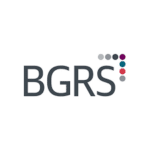German A2
Elementary German
You've got Options

Private Classes
Meet one or more times weekly with a dedicated German instructor online at a pace and schedule that custom fits your busy life.

Group Courses
Our 10 week group German courses meet twice a week for 1-hour classes. Learn German with other motivated students. Best option for German CEFR certification.

Self-Study
Do you like to study on your own when it's convenient for you? Buy helpful charts, vocabulary lists, and courses. CEFR standardized curriculum available.
Regardless of whether you are interested in private classes or group courses, or whether you come to us as a complete beginner or advanced learner, we will keep you on track using the following CEFR level standards. Dive into each level to learn about topics that will be covered at each level. German B2 and higher cover customized topics built around our clients and students’ goals and industries.
Learn about German A2 Topics
CORE Languages follows the CEFR standard for teaching foreign languages. That means we are required to teach specific topics in each level. In order to make learning more manageable, we have broken each level down into 4 short courses.
GEFR Level: German A2.1
- Level2-1 introduces the personal pronouns in the accusative case and the German articles in the dative case. We will learn how to use verbs with dative objects and how to make comparatives and superlatives. Conversation will focus on how to book trips, buy tickets, and items of clothing.
- Level2-2 will introduce the modal verbs in the past tense and verbs with both dative and accusative objects. Students will learn how to give and ask for advice and use the conjunctions weil and wenn. Conversation will center around family, holidays, and talking about conflicts.
After completing these levels, you’ll be able to:
understand sentences and frequently used expressions related to areas of most immediate relevance (e.g. very basic personal and family information, shopping, local geography, employment).
communicate in simple and routine tasks requiring a simple and direct exchange of information on familiar and routine matters.
describe in simple terms aspects of your background, immediate environment and matters in areas of immediate need.
CEFR Level: German A2.2
- Level 2-3 will center around the review of the tenses for regular, irregular and modal verbs. Students will also learn about two-way prepositions and the Konjunktiv II to express wishes and suggestions. Topics for level 7 include education, work life, and talking about your home and furniture.
- Level 2-4 contains topics such as the passive voice, its alternative lassen, and an introduction to adjective endings. Students will learn how to discuss transportation, describe preferences, and express consequences.
After completing these levels, you’ll be able to:
understand sentences and frequently used expressions related to areas of most immediate relevance (e.g. very basic personal and family information, shopping, local geography, employment).
communicate in simple and routine tasks requiring a simple and direct exchange of information on familiar and routine matters.
describe in simple terms aspects of your background, immediate environment and matters in areas of immediate need.
At CORE Languages, as part of the German A2.2 curriculum you will learn the following (and more):
Expressing doing things “in spite of”…; Using conditionals (wäre, hätte, würde); Talking about possibilities (könnte); Talking about weekend plans; Talking about events and cultural activities; Using adjectives in dative and accusative case; Describing items; Comparing items; Using the comparative and superlative; Understanding brochures and flyers; Complaining about orders; Using the post office; Using “one”/”you” in German; Using the passive in German; Talking about preferences; Talking about types; Leaving telephone messages; Apologizing; Expressing origins, destinations and locations; Expressing different types of motion (um, durch, über, entlang); Giving reasons (deshalb, deswegen); Talking about different types of weather conditions; Talking about plans and itineraries; Expressing the lack of something (ohne); Talking about duration; Booking trips; Writing and understanding postcards in German; Talking about vacation activities; Asking for information; Asking “who”, “when” and “where” questions effectively; Asking about opening hours; Using “if”-sentences; Talking about past points in time and past frequencies; Dealing with banks; Using the passive; Asking people to wait; Using “during”; Talking about knowing and being familiar with something; Using modal verbs effectively; “Inventing” useful German words; Giving advice; Handling conflicts in German; Talking about consequences.
Compass Blog
We add weekly content regarding everything German here. Make sure to subscribe!
Get Updates And Stay Connected
Subscribe To Our Newsletter
Recommended by an International Community
Discover All German CEFR Level Topics
Regardless of whether you are interested in private classes or group courses, or whether you come to us as a complete beginner or advanced learner, we will keep you on track using the following CEFR level standards. Dive into each level to learn about topics that will be covered at each level. German B2 and higher cover customized topics built around our clients and students’ goals and industries.
Don’t know your German level? Take our German Placement Test.
Learn basic German with a fun and interactive German A1 course for beginners. Get prepared for your A1 German language certificate exams.
Content covered in German A1 will help learners understand and use familiar, everyday expressions and very simple sentences, which relate to communicating basic needs. Learners can introduce him/herself and others as well as ask others about themselves – e.g. where they live, who they know and what they own – and can respond to questions of this nature. Can communicate in a simple manner if the person they are speaking to speaks slowly and clearly and is willing to help. Learn more about German A1
Whether you’re looking to learn German to relocate, for work, or just for fun, it can feel daunting knowing where to start. At CORE Languages our teachers will guide you with immersive learning to help guide you along the way.
Content covered in German A2 will help learners understand sentences and commonly used expressions associated with topics directly related to his/her direct circumstances (e.g. personal information or information about his/her family, shopping, work, immediate surroundings). Learners can make him/herself understood in simple, routine situations dealing with a simple and direct exchange of information on familiar and common topics. Can describe his/her background and education, immediate surroundings and other things associated with immediate needs in a simple way. Learn more about German A2
The world moves quickly nowadays, and sometimes it can feel like there aren’t enough hours in the day, so the idea of taking a German course can feel daunting. What if we told you that you can opt for a German B1 online course that’s completely flexible and you’re in charge?
Content covered in German B1 will help learners understand the main points when clear, standard language is used and the focus is on familiar topics associated with work, school, leisure time, etc. Learners can deal with most situations typically encountered when travelling in the language region. Learners can express him/herself simply and coherently regarding familiar topics and areas of personal interest. Learners can report on experiences and events, describe dreams, hopes and goals as well as make short statements to justify or explain his/her own views and plans. Learn more about German B1
By the end of this course, you’ll be able to understand complex texts, spontaneously interact with native speakers with relative ease, produce detailed texts on a wide range of subjects and write and explain your viewpoints. When you learn with CORE Languages we’ll challenge you with comprehensive reading, writing and listening exercises to match your interests, all the while our native-level teacher will be there to give you personalized feedback in real-time. Learn more about German B2
Start a German Group Course at Work
Find out how businesses implement our training courses to help their employees succeed with client exclusive training options.















